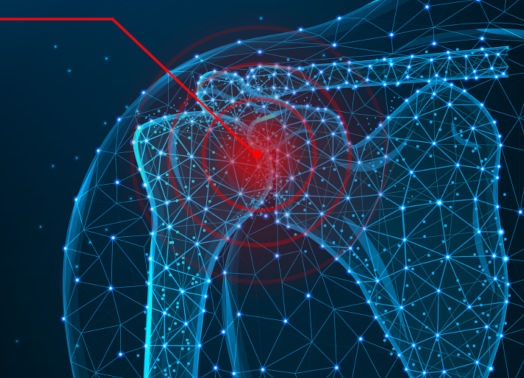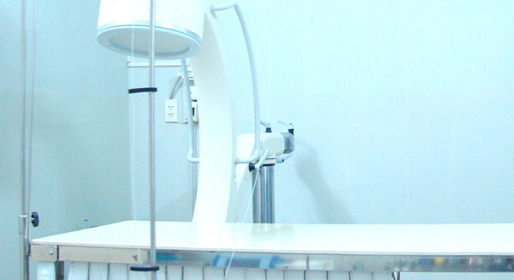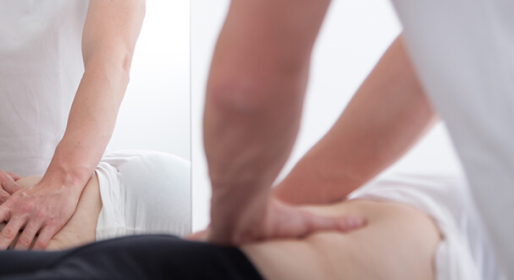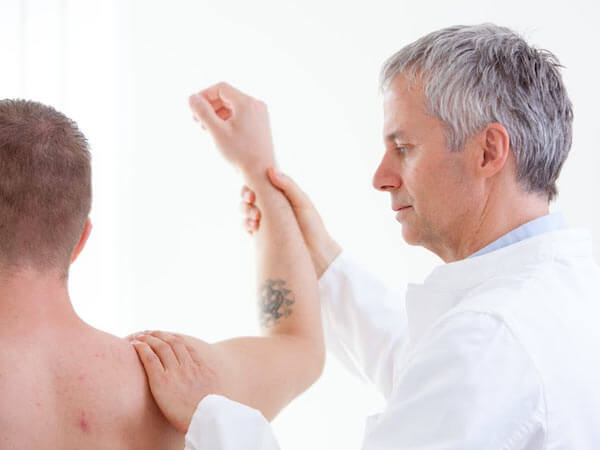Treatment of shoulder pain in Munich
Shoulder
Diagnosis of shoulder pain in Munich
At the beginning, the focus is on a detailed discussion with the patient about the medical history and causes. This is followed by a detailed clinical examination with a movement check to determine the exact extent of the functional impairment. In many cases we use what are known as imaging procedures; these are helpful to consolidate the diagnosis. Ultrasound (sonography), x-rays, magnetic resonance imaging (MRT) or computed tomography (CT) are available. We then create a therapy concept that is individually tailored to the patient and initially focuses on the broad spectrum of conservative treatment options. This will usually treat you effectively and safely for most shoulder complaints.
Your advantages at OrthoCenter Munich
- Orthopedic treatment focus on spinetherapy
- Wide range of conservative and operative procedures
- Gentle procedures in focus: Dr. Riedel specializes in gentle pain therapy. He was head physician in various pain clinics for over 20 years
- Joints and surgical expert: Prof. Dr. Lill specializes in the treatment of joints. He has years of experience in the field of minimally invasiveand arthroscopic ops.
- Cooperation with clinics and research institutes worldwide
- Renowned private practice: the OrthoCenter is internationally known and repeatedly welcomes patients from abroad who come to Munich for treatment
OUR ORTHOPEDIC SERVICES FOR PAIN IN THE SHOULDER
Shoulder impingement syndrome
Causes & symptoms:
Hip Impingement syndrome – also called Femeroacetabular Impingement – is characterised by reduced hip mobility. Generally the top of the femur, or femoral head, makes contact with the hip socket, or acetabulum. This causes damage over time and if left untreated, the patient can be sure to develop arthritis in the hip joint. Pain in the groin area is typical of this type of condition. Symptoms of hip impingement can also include pain from prolonged sitting or reduced mobility based on the patient’s avoidance of painful movements. To avoid the formation of additional conditions, treatment of the hip should be undertaken immediately.
Treatment:
To relieve pain associated with hip impingement, physical therapy and medication will be prescribed. Treatment will include electro-therapy as well as the placement of mudpacks over the affected joint. Normally, though, surgical intervention is unavoidable. To prevent further damage and therefore an advanced case of hip impingement, arthroscopic (keyhole) surgery may be deemed necessary. This type of procedure is generally uncomplicated. The pain previously experienced will be greatly reduced or completely relieved. The development of secondary conditions, such as arthritis, will be slowed or completely stopped.
Shoulder bursitis
Causes & symptoms:
Bursae perform an important function in the shoulder. They protect joint cartilage and muscles from damage from improper loading and over-burdening. A continuous irritation of the bursae can cause inflammation to occur and therefore bursitis. There are many ways in which to treat shoulder bursitis.
Treatment:
Treatment of shoulder bursitis comes in a variety of forms, all of which can provide quick relief from pain through a cold therapy (treatment using cold packs), injection of pain and anti-inflammatory medications, extracorporeal shock wave therapy via ultrasound devices, electro-therapy and mud packs. A specialist will be able to determine which course of treatment is right for you after completing a comprehensive examination.
Calcific tendonitis or tendinosis calcarea
Causes & diagnosis:
When the rotator cuff and shoulder joint receive too little blood flow, the result is a calcification of the shoulder tendons. The supraspinatus tendon is most commonly affected. If this is the case, one would classify this as calcific tendonitis. Patients with this condition will complain of shoulder pain and movement restrictions that can go so far as to affect movement of the upper arm.
Based on a description of symptoms, a specialist will be able to make an initial diagnosis. X-ray or MRI imaging will aid in confirming the diagnosis or in ruling out calcific tendonitis. Depending on the extent of the calcification and whether or not other conditions have already affected the shoulder, your specialist will choose the right course of treatment for your case.
Treatment:
Cases of calcific tendonitis can usually be successfully treated using extracorporeal shock wave therapy. Physical therapy, cold therapy and orthopaedic support devices can also offer positive results. If these conservative treatments do not produce the results that you would like, surgery remains an option. Here the calcium deposits will be removed arthroscopically.
Rotator cuff tear
Causes & symptoms:
The rotator cuff is a muscle group that works in a complex manner to provide the shoulder with maximum freedom of movement. Repeated improper loading or an injury can cause a tear to appear in the rotator cuff. The symptoms of this type of tear include pain and weakness. Due to the instability caused by the injury, dislocation of the shoulder may occur.
Treatment:
With any suspicion of a torn rotator cuff you should undergo an MRI for an accurate diagnosis. Surgical treatment must be carried out immediately. The pain will only get worse and, if left untreated, total degeneration of the shoulder joint can occur. Early treatment is essential because there is currently no prosthetic joint that can accurately mimic the shoulder’s movement, and you will therefore never recover completely if your shoulder joint becomes damaged beyond repair. With early detection, the ruptured tendons can be sutured back together. Partial tears can also be treated non-surgically, using orthopaedic devices that immobilise the shoulder.
Shoulder instability
Causes:
Because of its complex structure, the shoulder is particularly vulnerable to injury and over-burdening. Sometimes if a strong force is applied to the shoulder incorrectly, the humeral head (top of arm bone) may dislocate out of the shoulder joint. Usually this is accompanied by cartilage and tendon damage. Shoulder instability will ultimately lead to additional dislocations. For this reason, a specialist, who can initiate the proper treatment measures, should examine your shoulder instability.
Diagnosis & Treatment:
X-ray or MRI imaging can easily diagnose injuries following shoulder dislocation. Treatment often includes a strength-training programme in order to strengthen the muscles around the shoulder. If the shoulder continues to dislocate, surgery will be required, as the dislocations will inevitably cause more damage to tendons and cartilage. Follow-up appointments and treatment are essential after surgery in order to prevent stiffening of the shoulder joint. You should always follow your specialist’s instructions in a case of shoulder dislocation and treatment.
Biceps tendonitis
Causes:
Long biceps tendonitis can be caused by constant irritation of the shoulder or biceps muscle. This usually manifests itself in the form of biceps pain and pain in the shoulder. The mobility of the shoulder and upper arm is reduced. Injuries and accidents can also cause a rupture to occur in the tendon, but this is generally painless and in comparison to tendonitis does not require treatment.
Symptoms & Treatment:
Affected patients often experience pain while resting and when stress is put on the shoulder. In advanced stages, patients will certainly notice a restricted range of motion. As shoulder arthritis can deteriorate rather quickly, prompt treatment is suggested. A diagnosis with the aid of an x-ray is the first step. The only real treatment for shoulder arthritis is arthroscopic (keyhole) surgery. Other conservative methods, such as physical therapy, cannot cure arthritis; they simply help to relieve pain.
Shoulder arthritis
Causes:
Shoulder osteoarthritis is a serious condition that demands immediate treatment. Over-burdening, injuries and other shoulder conditions can cause arthritis to develop. Shoulder arthritis can also be caused by an untreated case of a torn rotator cuff. Learn more about the symptoms and treatment of osteoarthritis of the shoulder.
Symptoms & Treatment:
Affected patients often experience pain while resting and when stress is put on the shoulder. In advanced stages, patients will certainly notice a restricted range of motion. As shoulder arthritis can deteriorate rather quickly, prompt treatment is suggested. A diagnosis with the aid of an x-ray is the first step. The only real treatment for shoulder arthritis is arthroscopic (keyhole) surgery. Other conservative methods, such as physical therapy, cannot cure arthritis; they simply help to relieve pain.
Tendon and muscle injuries of the shoulder
Causes:
Constant stress and over-burdening during sports or at work are the main causes of rotator cuff injuries. Symptoms of muscle injury include muscle pain, tendon pain and loss of strength. The possibility of dislocating your shoulder is also greater when the muscles are injured and can no longer provide stability. A severe form of this condition is a tear of the rotator cuff, which must be surgically repaired.
Diagnosis & Treatment:
An MRI is required to make an accurate diagnosis of a rotator cuff injury and for muscle and tendon pain in the shoulder. The shoulder will be treated conservatively or surgically, depending on the severity of the condition. Your orthopaedic specialist will examine your shoulder and guide you through the treatment options and which ones may be right for you.

Your shoulder specialist Prof. Dr. Lill
YOUR CONTACT FOR SHOULDER PAIN
Professor Lill is looking forward to examining your shoulder and providing you with an accurate diagnosis. Don’t waste any time – schedule your appointment with him today.















